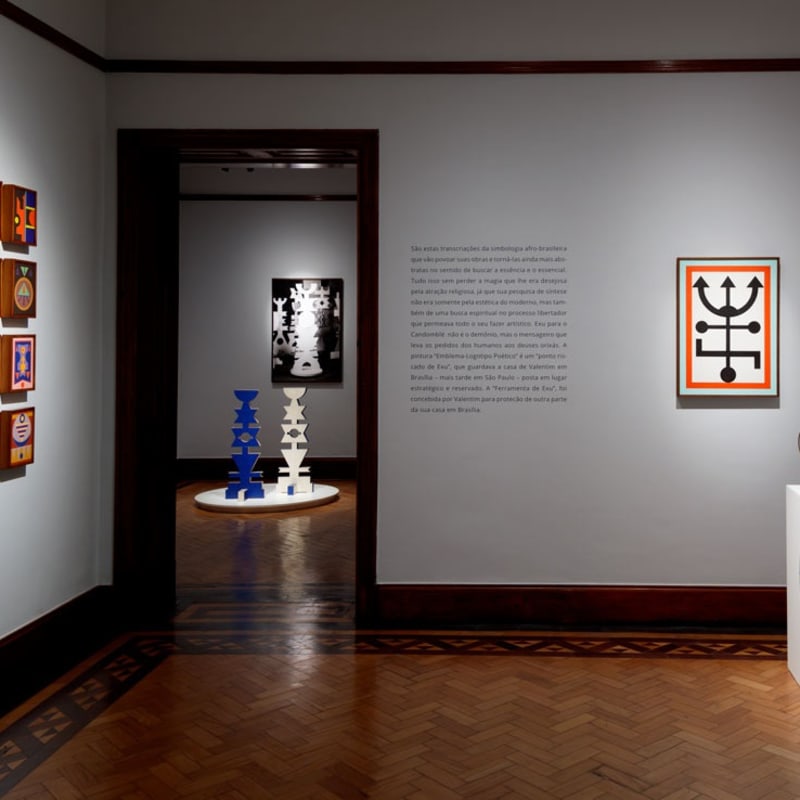"Valentim is a vital product of this mixed-race being that we have become, and perhaps he is the artist who best and most intensely achieved the syncretic synthesis in all the Americas affected by a brutal colonization that still torments the conscience in the 21st century. His bold and daring aesthetic contribution, not only due to his obsession with making or wanting to leave behind the testimony of an original symbology transcribed from the Afro-Brazilian spiritual force but also due to his native indigenous heritage through the interweaving of primordial and ancestral symbols and sounds that composed ancient civilizations in the creation of the geometry of the sacred. Valentim wanted to recreate in a libertarian and courageous way by translating this poetics of the holy into almost 2,000 works, including paintings, reliefs, sculptures and objects, drawings and his graphic work, making him one of Brazil's founding artists of the visual imagination.
[…] His work enchants and sings epiphanies to the orixás of a new world to contribute to a utopian and poetic project. A dream yet to be realized. His poetic and mythical grammar unfolds or fits together piece by piece, color against color or in favor of another, in the counterpoint of totems and the taboo that he challenged by touching on the things of the terreiros of the mixed-race black people and that many Brazilians do not welcome. And, as if the sounds of drums resonated in its emblematic objects, courageous polyphonic music is danced in an infinite ritual of forms that welcomes a choral structure, singing the epiphanies of power and faith. Valentim is the fullest and most original achievement, not only of the "Brazilian constructive project", but of an aesthetic and spirituality developed with diligence between the 1950s and 1980s that defined a precious contribution of the Americas to the art of the world."
Bené Fonteles, “Sagrada Geometria”, Edições Pinakotheke, 2022


